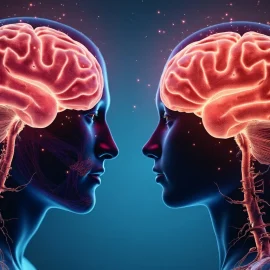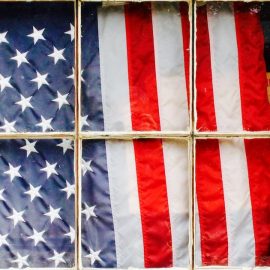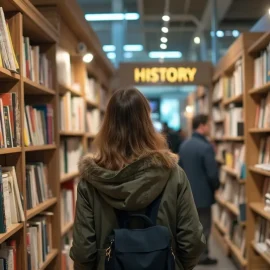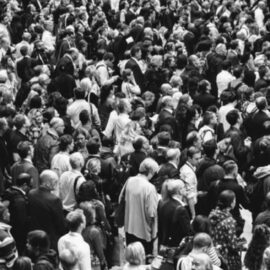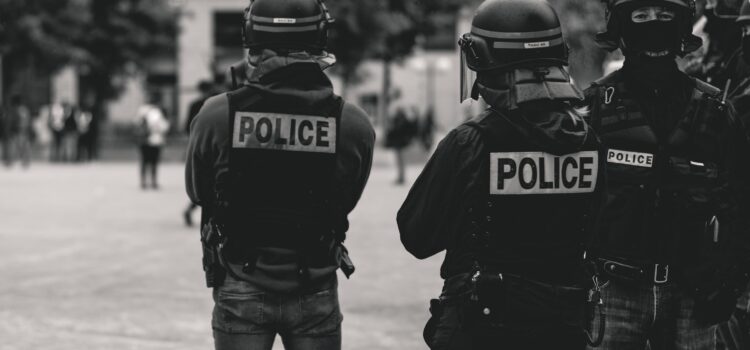
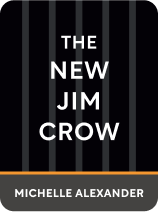
This article is an excerpt from the Shortform summary of "The New Jim Crow" by Michelle Alexander. Shortform has the world's best summaries of books you should be reading.
Like this article? Sign up for a free trial here .
What happens during police searches? What are the racial differences in police searches?
In The New Jim Crow, Michelle Alexander discusses the changes in rules for police searches. The result is race-based differences that support mass incarceration.
Read on to better understand the role of police searches in mass incarceration, as discussed by The New Jim Crow.
The Lockdown
With this high-level impetus for enforcing a form of social control, how was it concretely implemented on the ground? Through a combination of police searches and arrests, and legal permissions loosening the requirements for such arrests.
First, the statistics:
- Drug offenses account for ⅔ of the rise in federal inmates and ½ of rise in state inmates between 1985 and 2000.
- 500k people are in prison today for a drug offense today, compared to 41k in 1980.
- ⅘ drug arrests are for possession, and ⅕ for sales – so drug laws aren’t cracking down on kingpins, as commonly bandied, as much as mere users.
- Marijuana arrests accounted for 80% of growth in drug arrests in the 1990s
A bevy of changes made it easier to arrest and convict people for drug offenses.
Legal Loosening of Police Searches
The Fourth Amendment was designed to protect against unreasonable searches and seizures by police. The courts loosened this by:
- Condoning mandatory drug testing without warrants in the interest of public safety and student safety
- Lowering the degree of suspicion required for warrantless police searches in public
- Arguing that average people should know not to give consent for suspicionless police searches.
- They argued it’s impractical to require police to explain to every suspect his right to refuse consent to a search.
- In reality many people feel intimidated by police and don’t know they have the option of saying “No, you may not search my bag.”
- Upholding ability of police to stop drivers for any traffic offense.
- Allowing discretionary arrests for fine-only misdemeanors because requiring police to know details of penalty schemes on the spot was unreasonable.
- Allowing use of drug-courier profiles in justifying searches. There are no national standards for profiles, and they can be so vague as to be generally applicable.
Police Searches Increase
Empowered by this latitude, police conducted more liberal searches.
- Consent searches pressure people to comply, despite people not knowing they could refuse.
- “May I speak to you? Will you put your arms up and stand against the wall for a search?” Compliance is interpreted as consent.
- “Pretext stops” use minor traffic violations as a pretext to search for drugs, despite no evidence that drug laws are being violated.
- Argument: There are so many minor laws that are commonly broken that virtually everyone can be stopped as pretext for drug searches.
- Bringing drug-sniffing dogs to traffic stops or in public gives probable cause to search without consent.
- Additional likelihood of being arrested for misdemeanors may increase willingness to provide consent.
Federal agencies supported local law enforcement to participate.
- Because local and state officials buckle under federal authority, the fed knew it had to build a consensus that the drug war should be the top priority.
- Cash grants, intelligence, and military equipment were made available to agencies that increased drug arrests. Police departments expanded, and keeping police jobs become dependent on arrests. It became an entrenched practice.
- The DEA launched a campaign to train tens of thousands of police officers on the search tactics above.
Police departments became invigorated to increase drug arrests:
- The militarization of police led to no-knock drug raids.
- Civil forfeiture laws allow law enforcement (federal, state, and local) to keep cash and assets seized from people merely suspected of wrongdoing, without necessarily charging them of wrongdoing. The incentives are heavily in favor of more arrests.
- The minimal requirement is that there is a “preponderance of evidence” that the asset was involved in a crime. A woman who knew that her husband smoked pot and drove her car could lose her car.
- The owner had no right of counsel unless charged with a crime, and so the poor could not afford the court costs to retake their assets. Thus most forfeiture cases are not challenged. (If you lose $1000, would you pay $5000 for a lawyer to get it back, and risk the gov’t pressing charges?)
- Investigations show that those who have more assets to forfeit are given more lenient punishments.
- This extends to planting drugs and falsifying reports to establish probable cause for cash seizures.
- Reports of increased drug arrests gave the public a heightened sense of danger, rather than recognition of the effect of incentives.
Those Arrested Have Little Chance
The legal system was stacked against those arrested for drugs.
- Public defenders may have over 100 clients at a time and may meet with a lawyer for only a few minutes.
- Some states deny representation for people who earn over a certain income limit.
- Nearly all cases are resolved through a plea bargain. The full drug penalties are so severe – eg 20 years in prison for possession; in some cases life imprisonment – that when prosecutors offer “just 3 years,” it seems foolhardy not to take it. This transfers substantial power from judges to prosecutors and encourages prosecutors to overcharge.
- The Supreme Court upheld draconian laws like California’s three strikes law, which mandates 25 to life sentences for a third charge of a felony. Not 3 separate cases – 3 charges in a single case could qualify as 3 strikes.
- Many prisoners are released on parole and sent back due to technical violations (missed appointment, became unemployed, failed drug test).

———End of Preview———
Like what you just read? Read the rest of the world's best summary of Michelle Alexander's "The New Jim Crow" at Shortform .
Here's what you'll find in our full The New Jim Crow summary :
- How the US prison population increased 10x in 30 years because of harsh drug policies
- How being "tough on crime" was deeply motivated in discrimination against black people
- Why being convicted for a crime is essentially a life sentence of poverty and return to prison

